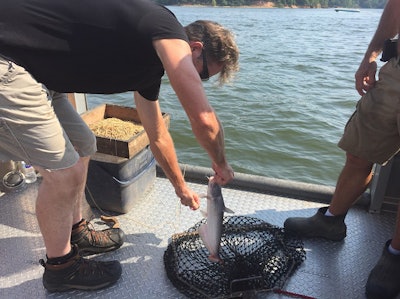
It’s no secret that today’s pet owners are applying the same demands and desires to their furry family members’ food choices that they do for their own. Take locally sourced ingredients, for example. In the U.S., direct-to-consumer sales of regional food more than doubled from 1992 to 2012, from US$0.4 billion to US$1.3 billion, according to a 2017 report by Andrew Dumont, senior community development analyst for the Federal Reserve Board.
No doubt sales have continued to increase as consumer demand also rises, along with a willingness (at least stated) to pay more for local food. Dumont cited data from A.T. Kearney showing that 95 percent of single urban households in the U.S. said they’re willing to pay more; even 57 percent of low-income households stated the same, with other types of households in between.
More recently, as of spring 2015, the number of people who said they buy locally grown food amounted to about 82 million, according to Statista. And in 2018, Packaged Facts research showed that 32 percent of U.S. food shoppers said they seek locally raised or grown foods.
This demand is certainly not limited to the U.S. In Britain, for instance, 79 percent of adults said it’s important for people to buy locally sourced produce, according to a 2015 report from YouGov UK, and 62 percent had done so in the previous year.
For pet food, local sourcing aids ingredient transparency
Specific to pet food, “locally grown foods and ingredients” are among the most important claims for U.S. pet owners, according to Packaged Facts’ consumer surveys. And a related claim — transparency in pet food ingredients — also ranks high, with nine out of 10 Americans saying it’s important in a 2017 survey conducted by Open Farm pet food.
Because of pet owners’ demand for transparency, the ability of pet food companies to source ingredients from the regions where their manufacturing facilities are located matters, even as these companies often sell their products all around a particular country or even the world. A number of pet food producers have been practicing this type of sourcing for decades, but now they’re talking about it more. Others are purposely locating new plants in the heart of abundant agricultural regions for that very reason, and/or actively partnering with farmers and ranchers.
For instance, Canidae Pet Food partnered with an organic farmer in Kansas last year, launching Canidae Farms to source its own organic produce. For an example of the former situation, Bewital Petfood has been based in the fertile Muensterland area of Germany for more than 50 years, sourcing many of its ingredients from local farms and ranchers all that time. That procurement strategy has become more of a key selling point, appearing in a video highlighted on the company’s website.
Champion Petfoods started operations in 1985 in Edmonton, Alberta, Canada, and from the beginning has sourced most of its ingredients locally. To accommodate rapid growth, including expansion in the U.S. and beyond, and take advantage of agricultural riches in the U.S., the company opened its state-of-the-art DogStar Kitchens in Auburn, Kentucky, in 2016.
Kentucky is the 36th largest state in the U.S. but has the fourth highest number of small and medium-size farms, according to Keith Arnold, manager of the kitchens. That was the chief reason for choosing the facility’s location. Champion has established strong partnerships with many regional farmers, ranchers and fisheries, and even showcases these people on its packaging.
Local sourcing case study: Champion Petfoods
I learned about this connection with Champion’s ingredient sources during a recent tour of DogStar Kitchens, led by Arnold. He showed our group the entire plant, including the 25,000 square foot cooler where all those ingredients are taken in, inspected, labeled and started on their way through the production process.
Nearly all the ingredients delivered there are fresh (a key part of Champion’s nutritional philosophy), arriving at the facility within three days of being picked, caught or slaughtered, said Champion personnel. There a few exceptions with ingredients that can’t be sourced locally (think seasonally variable fish or lamb from New Zealand), which are flash frozen while still in a raw state before shipping to Kentucky. To maintain that freshness and ensure safety, the cooler at DogStar is kept at 38 degrees Fahrenheit, and all employees (and visitors) are required to follow strict sanitation rules and practices.
To further showcase the local sourcing connection, part of the tour included an outing to Barclay Lake in southwestern Kentucky, about 85 miles from DogStar, to fish with Champion’s catfish supplier, McDonald Farms & Fisheries. Our group was able to see the fisheries’ process of laying out lines, then pulling them up later to reap the catch.
Ingredient sourcing strategy pays off
Though Champion now sells its pet foods in many countries, its strategy of sourcing ingredients in the regions around its plants — it still practices this at its NorthStar facility in Canada, too — allows the company to tell retailers and pet owners everywhere that it knows fully where each ingredient comes from and can ensure its quality and safety. To support that story, Champion employs a complete track and trace process back to all the farms, ranches and fisheries two to three times a year, Arnold said.
The strategy must be paying off: Champion achieved revenue of US$180 million in 2017, according to our Top Pet Food Companies Database, ranking 31st globally.


















